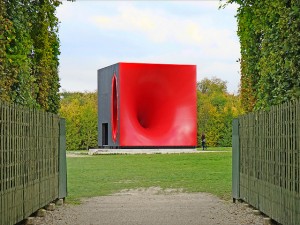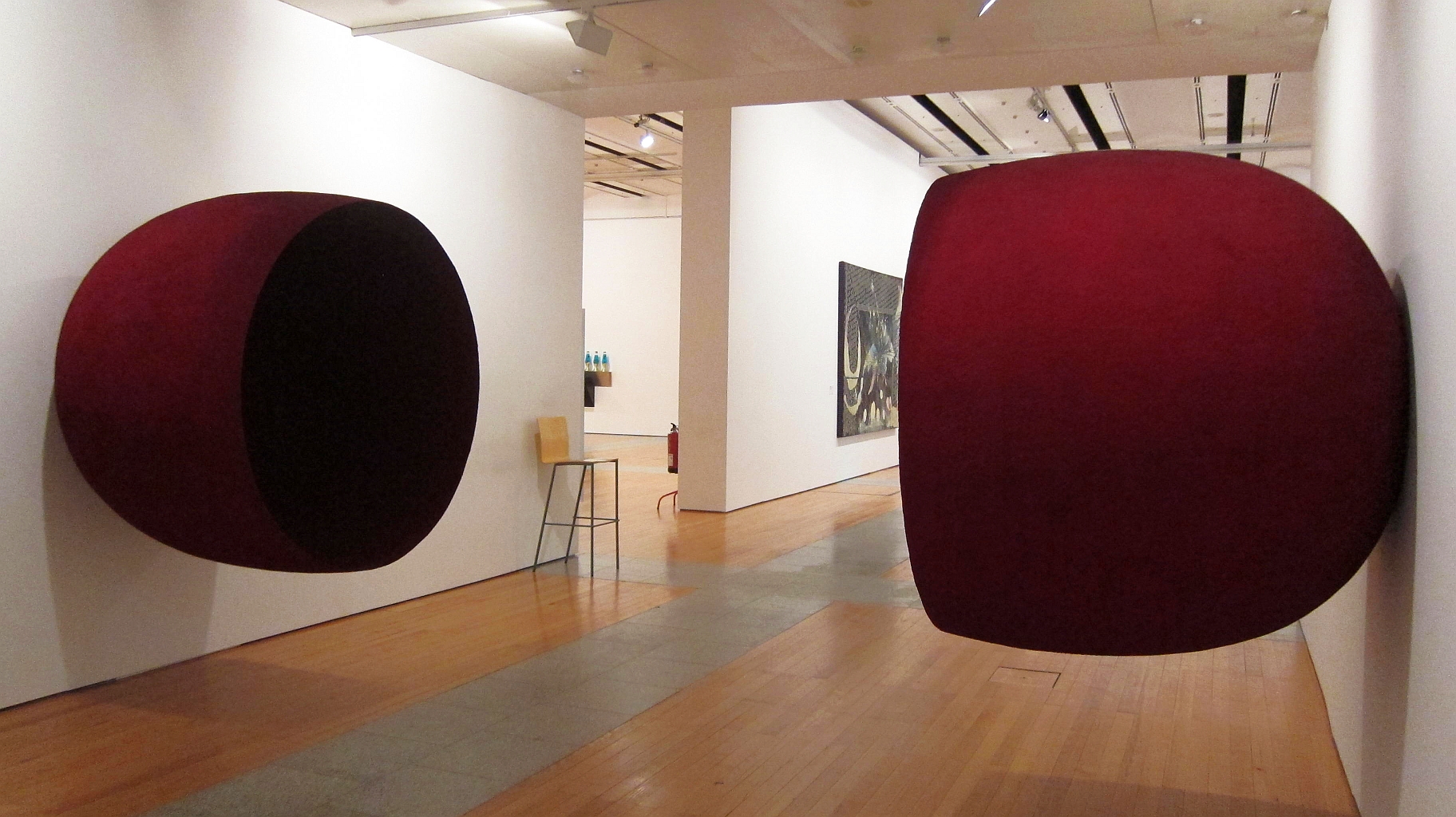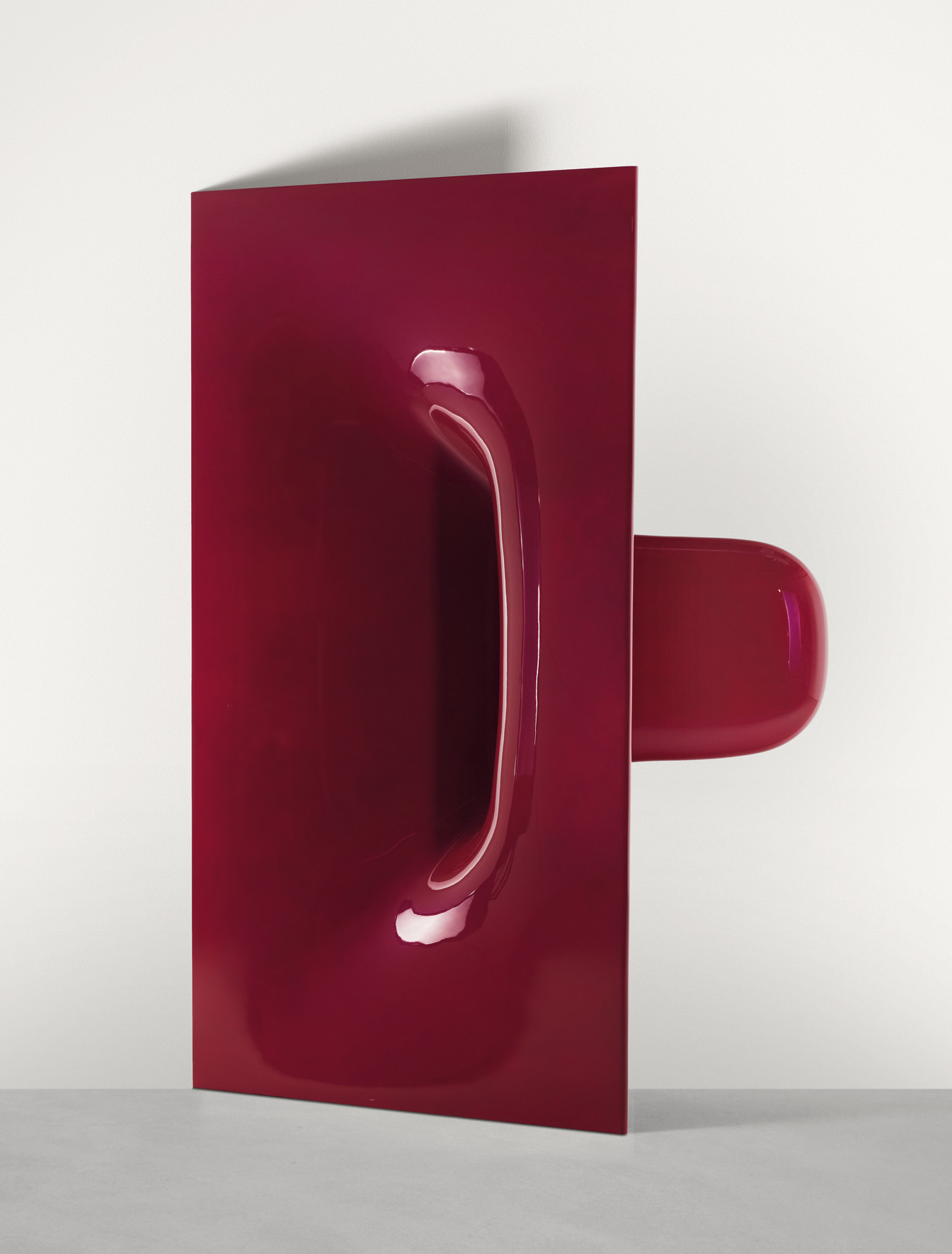Anish Kapoor’s ‘Pouch’ sold for €337,136 at the contemporary art auction at Dorotheum Vienna on 1st June, 2016.
One would need a very, very big head to wrap around an influence as vast as that of Anish Kapoor; the artist’s deeply red shadow colours every corner of contemporary sculpture. Yet try one must. Either that, or be swallowed by the void, that ominous trapdoor that Kapoor’s work places beneath the viewer’s every step. One art blogger’s attempt.

“I have made works that are holes in the floor, that are directly, if you like, the falling – but that falling doesn´t have to be downwards. The falling in some curious way could also be towards a horizon or even upwards. Vertigo is at the centre of this though – disorientation.”
–A Conversation. Anish Kapoor with Donna de Salvo, Anish Kapoor. Marsyas, London: Tate Publishing, 2002, p. 62.
A star rises
Born to second-generation Punjabi and Iraqi-Jewish parents, Anish Kapoor grew up in the loud, dirty streets of Mumbai. He left his home country of India for London to attend art school (1973–77; 1977–78). When he returned to India in 1979, he saw his country with changed eyes. A newfound appreciation for arresting architectural forms and saturated pigments surfaced in his work, starting with 1000 Names. This series, which Kapoor developed between 1979 and 1980, consists of abstract geometric shapes dusted with granular pigments that pour from the objects onto surrounding surfaces.
Kapoor spent much of the 1980s and 1990s making seemingly gravity-defying, perception-skewing biomorphic installations and sculptures from stone, aluminium, resin, and a host of other materials.
Fielding the void
In Void Field, the sculptural installation with which Kapoor represented Great Britain at the Venice Biennale in 1990, four rugged blocks of quarried Northumbrian sandstone, each capped with a small, black cavity, form an enigmatic grid. Kapoor won the coveted Turner Prize for outstanding contemporary art a year later. For the remainder of the decade, he continued to mine the idea of the void, injecting his work with constructions that vanished into floors, withdrew into walls, and shifted depth dramatically at the turn of a glance.

From void to vertigo
Infusing his art with metaphysical nothingness to confront viewers with the concept of the void, however satisfying, isn’t enough for Kapoor. He takes the exercise a step further, situating that nothingness at just the point where it is sure to trigger a specific sensory experience: the sensation of motion. With head spinning, world whirling, and stomach churning, the viewer spirals from spectator to active participant, deeply affected by Kapoor’s work to the point of dizziness.

Vertigo experienced at the verge of the void – that is the state Anish Kapoor wants his art to induce. His search for the intimate and the sublime starts with the modern, the mechanical, and the scientific. Tactile, reflective materials that are self-contradictory are driven to extremes. Opposites merge, dislocating space and producing disorientation – the kind one might feel at the sight of a world being born.
So it is with Pouch, the standout sculpture by Anish Kapoor that features as Lot Nr 617 in Dorotheum’s Contemporary Art, Part I auction on June 1.
Like so much Kapoor, Pouch is pure, primal redness. When asked about his obsession with red in a 2013 interview with Heike Fuhlbrügge for Art Magazine, Kapoor replied, “I think that it has to do with the fact that it is biological. That we read ourselves in the colour red. (…) In contrast to black, red additionally has a quality of interiority.”
Abstract assertions aside, Pouch conflates interiority and exteriority into a single, fiery whole. The work stages a seamless transition from closed mass to hollow form. What from one side looks like a horizontal pouch becomes, on the other, a portal to a mystical space whose enormity engulfs the viewer, vertigo and all.
The border between sculpture and painting dissolves in a dizzying free fall of red.

Free fall into Anish Kapoor’s Pouch at Dorotheum on June 1, 2016.
When: 1 June, 2016; 6 pm
Where: Palais Dorotheum Wien
Our Client Advisory Service is glad to assist you!
Tel. +43-1-515 60-570, Fax -489
client.services@dorotheum.at











